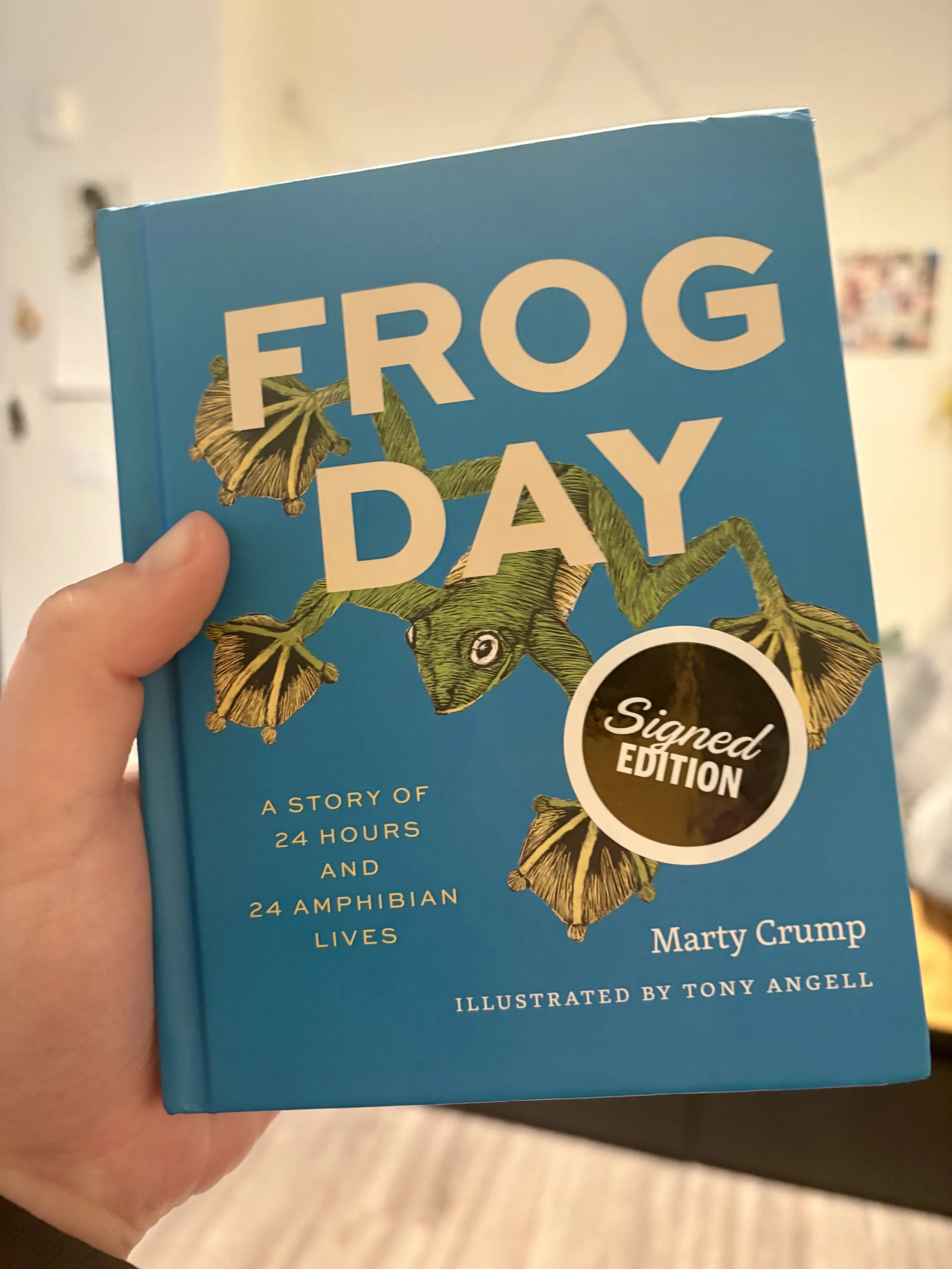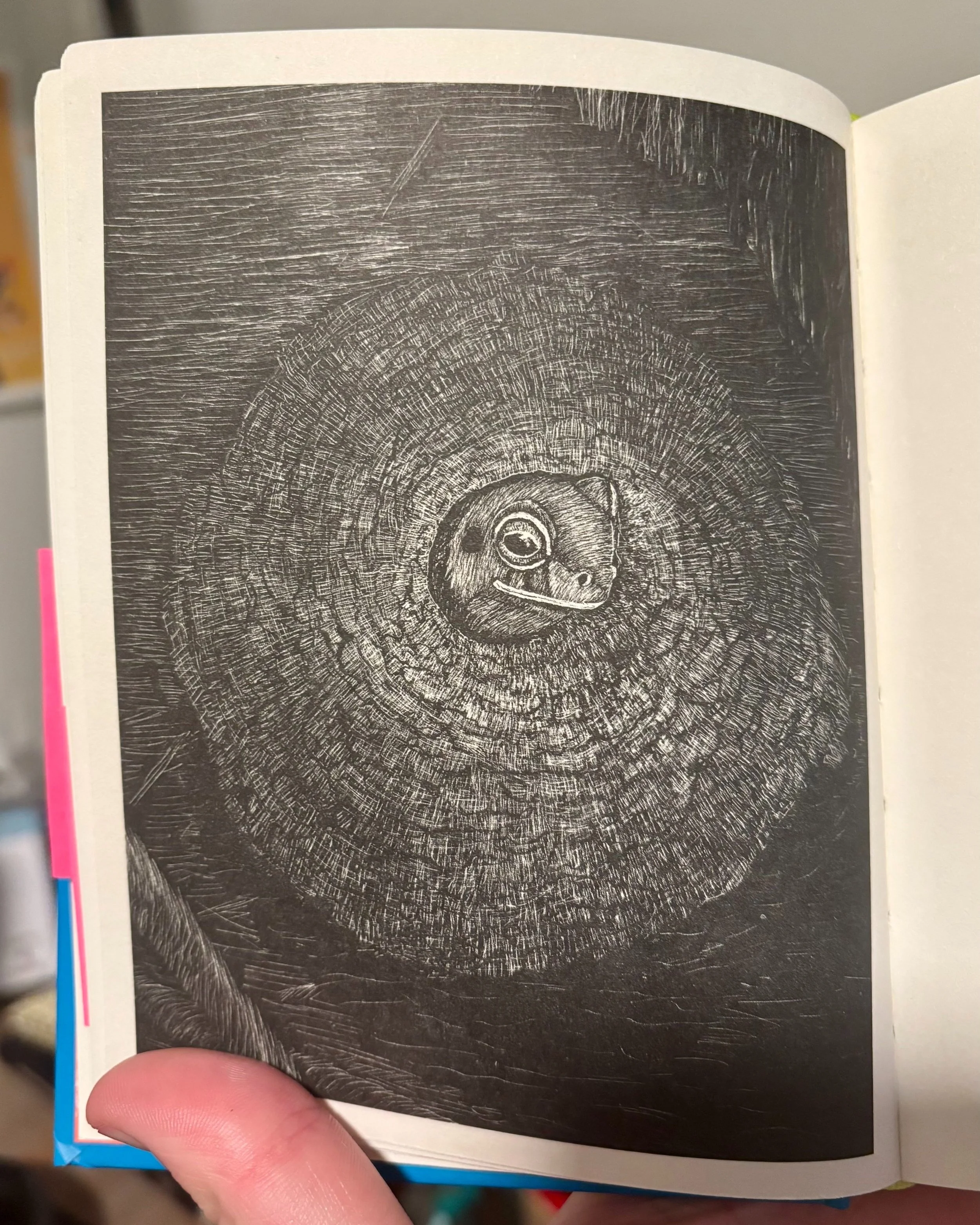Crump states in the book’s preface: “by combining science with narrative and Tony Angell’s illustrations, I hope to make frog natural history come alive—to hatch a tadpole of interest that will metamorphose into a frog of deep appreciation.” This book does all of that and more, but beyond this book’s wonderful scientific research and dedication to bringing awareness to the conservational efforts for frogs and toads, it’s just plain fun. Learning about these creatures and enjoying Angell’s illustrations gave me just the sort of glee that I was hoping it would. The narrative is fantastic, mixing the action-packed goings-on of the species of the hour while never straying too far from the educational intention.
I often find that the easiest way to learn new things is to feel as though you’re not learning at all, and that’s exactly what this collection does. I was so consumed with the exciting aspects of frog life that I didn’t realize just how much information I had gathered. By the end, I almost feel like a frog expert (a frog-pert perhaps? An exprog?). I now know how certain species build homes, adaptations that allow flogs to “fly,” and how frogs parent their babies.
The winning frog for me (and if you get a copy of this book, I’d love to hear yours too), was the Mud-Nesting Frog from South America. This Argentinian frog spends his day building a mud fortress—no, really—to create a perfect, safe puddle of standing water, a necessary bit of interior design for the eggs of a Mud-Nesting Frog. He then calls for a mate and hangs around in this mud volcano until she comes along, and they can leave behind their eggs to survive the wet season safely. I don’t know about you, but hanging out in a mud bath sounds like a great afternoon to me, and Angell’s illustration of this little frog chilling in his mud pile made me laugh out loud when I first saw it.

